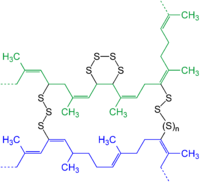
Photo from wikipedia
Heterogeneously catalyzed lignin solvolysis opens the possibility of transforming low value biomass into high value, useful aromatic chemicals, however, its reaction behavior is poorly understood due to the many possible… Click to show full abstract
Heterogeneously catalyzed lignin solvolysis opens the possibility of transforming low value biomass into high value, useful aromatic chemicals, however, its reaction behavior is poorly understood due to the many possible interactions between reaction parameters. In this study, a novel predictive model for bio-oil yield, char yield and reaction time is developed using Random Forest (RF) regression method using data available from the literature to study the impact of surface properties of the catalyst and the weight averaged molecular weight of the lignin (Mw) used in the reaction. The models achieved a coefficient of determination (R2) score of 0.9062, 0.9428 and 0.8327, respectively, and feature importance for each case was explained and tied to studies that provide a mechanistic explanation for the performance of the model. Surface properties and lignin Mw showed no importance to the prediction of bio-oil yield and average pore diameter contributed 3% of feature importance to reaction time.
Journal Title: Bioresource technology
Year Published: 2021
Link to full text (if available)
Share on Social Media: Sign Up to like & get
recommendations!